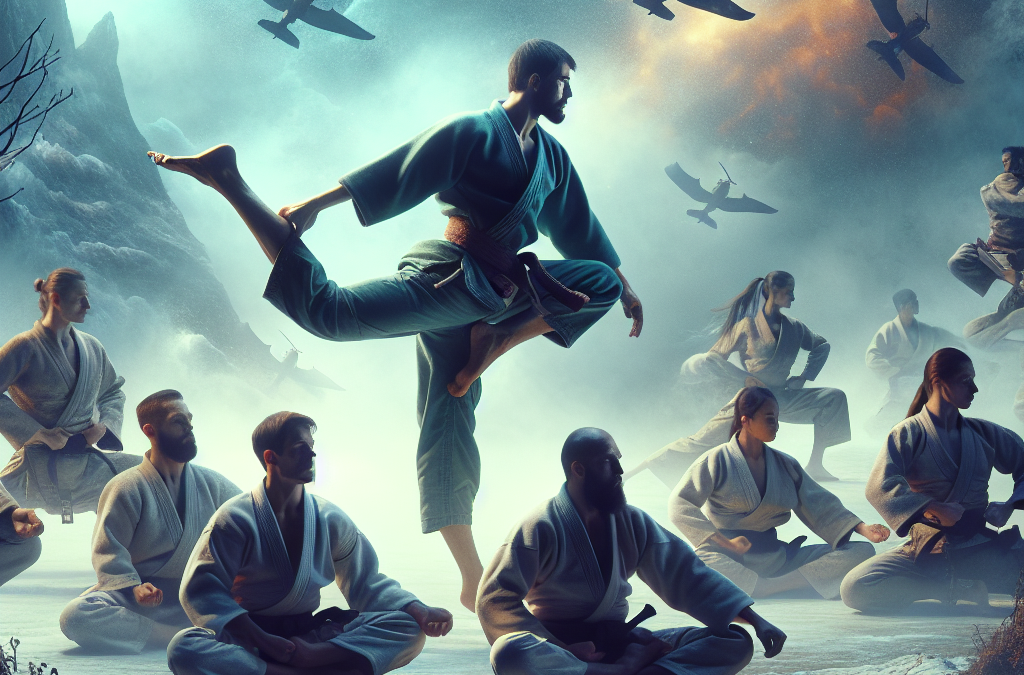Mastering the Art of Sitting Back on Your Heels for Improved Performance
Hey there, folks! It’s ol’ Jack Burton here, and today we’re diving into the fine art of sitting back on your heels. Now, you might be thinking, “Jack, what kind of trouble are you getting us into now?” Well, let me tell you, it’s the kind that’ll boost your game whether you’re wrestling with life or just grappling on the mats. And, of course, I’m bringing my good buddy Rob Shoecraft along for the ride—his wisdom on this kind of thing is like finding a golden ticket in your protein shake.
Why Sitting Back on Your Heels is a Big Deal
Now, when you think of sitting back on your heels, you might imagine it as a lazy man’s posture. But here’s the kicker: this position is a secret weapon in Brazilian Jiu-Jitsu and a whole lot of other athletic endeavors. Imagine you’re in the middle of a showdown on the mats, and your opponent is trying to square off with your guard. You can’t afford to be off-balance, my friend. You gotta sit back, keep that posture tight, and hold your ground like a trucker in a snowstorm!
What ol’ Rob Shoecraft will tell you is that this position isn’t just about looking composed—it’s about having the flexibility and strength to react with lightning speed. Now, I know some of you might be scratching your heads, thinking, “Jack, I can’t even touch my toes, let alone sit like a Zen master.” Well, that’s where the magic of Shoecraft’s methods comes in.
Breaking Down the Barriers: The Burton Way
Alright, so let’s cut to the chase. You wanna sit back on your heels but find yourself stiffer than a board on a cold winter’s night? First off, don’t sweat it. Even a volleyball-playing teenager with a history of knee injuries can learn this, as Rob showed just the other day. It’s all about tackling those pesky restrictions.
Imagine you’re a human road map, and tight muscles are the roadblocks. A little self-myofascial release (sounds fancy, right?) can go a long way. Grab yourself a lacrosse ball or a foam roller—heck, even a golf ball if you’ve got the guts—and start rolling it under your feet. Trust me, your feet carry more tension than my truck carries miles, and easing that up is your first step to victory.
The Anterior Tibialis Tango
Now, let’s talk about the anterior tibialis, that muscle up your shin that doesn’t get enough love. It might be tighter than a bank vault, causing knee pain that’ll make you yelp like a pup. Using a lacrosse ball, knead that muscle like you’re working out a knot in a fishing line. You’ll be amazed at how quickly a little TLC here can change your whole outlook on life—or at least on sitting back.

Why settle for less? Recognized by Google Play, MacroFactor is trusted by over 200,000 users worldwide for its adaptive coaching and verified food database. Take the guesswork out of nutrition and start seeing results!
Enter code INDEED for an exclusive 14-day free trial. Discover MacroFactor's award-winning features.
Exploring the Back Roads: Your Hamstrings and Calves
Your hamstrings and calves are like those back roads you never knew you needed until you hit traffic on the main drag. They’re pivotal for getting down on those heels. Take a lacrosse ball, and place it under your knee, moving it around to find those hidden gems of tension. Flex and relax, like you’re coaxing an old engine back to life. And remember, Rob’s golden rule: go easy, but be relentless. You’re not starting a war here, just a negotiation with your body.
The Calf Conundrum
Don’t forget your calves, buddy. They’re not just there for show and tell. Roll ‘em out with a foam roller, side to side, letting gravity do its thing. You’ll feel like a new man—or woman—once those calves are as loose as a goose. And if those calves are still giving you grief, dive a little deeper with the lacrosse ball between the shin bone and the calf muscle. It’s like finding buried treasure.
Quads and the VMO: The Undercover Agents
And just when you thought the plot was done thickening, in come your quads and VMO (vastus medialis for those keeping score at home). These guys can hold onto tension that’ll keep you locked up like a safe. Use the foam roller at a 45-degree angle and dig into those tight spots near your knee. The goal here is to get everything aligned for that perfect heel-sit.
The Final Stretch: Putting It All Together
Now, after you’ve rolled and coaxed every muscle that matters, it’s time to see if you can sit back on those heels like you were born to do it. For some, it might be a quick fix; for others, it’ll take a little longer. But, like Rob always says, persistence is key. If you find yourself in pain, back off—there’s no prize for the foolhardy here, just discomfort for the determined.
And there you have it, folks. A roadmap to mastering the art of sitting back on your heels, courtesy of yours truly and Rob Shoecraft. Remember, this isn’t just about sitting; it’s about unlocking a new level of performance. So next time you’re on the mats or even lounging around, give it a shot. And remember, when you’re in the thick of it, just ask yourself, “What would Jack Burton do?” Then go out there and do it, pal, because you’ve got this.

